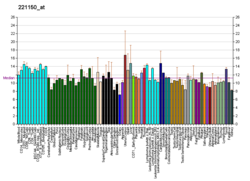| MEPE | |||||||||||||||||||||||||||||||||||||||||||||||||||
|---|---|---|---|---|---|---|---|---|---|---|---|---|---|---|---|---|---|---|---|---|---|---|---|---|---|---|---|---|---|---|---|---|---|---|---|---|---|---|---|---|---|---|---|---|---|---|---|---|---|---|---|
| Identifiers | |||||||||||||||||||||||||||||||||||||||||||||||||||
| Aliases | MEPE , OF45, matrix extracellular phosphoglycoprotein | ||||||||||||||||||||||||||||||||||||||||||||||||||
| External IDs | OMIM: 605912; MGI: 2137384; HomoloGene: 10623; GeneCards: MEPE; OMA:MEPE - orthologs | ||||||||||||||||||||||||||||||||||||||||||||||||||
| |||||||||||||||||||||||||||||||||||||||||||||||||||
| |||||||||||||||||||||||||||||||||||||||||||||||||||
| |||||||||||||||||||||||||||||||||||||||||||||||||||
| |||||||||||||||||||||||||||||||||||||||||||||||||||
| |||||||||||||||||||||||||||||||||||||||||||||||||||
| Wikidata | |||||||||||||||||||||||||||||||||||||||||||||||||||
| |||||||||||||||||||||||||||||||||||||||||||||||||||
| Osteoregulin | |||||||||
|---|---|---|---|---|---|---|---|---|---|
| Identifiers | |||||||||
| Symbol | Osteoregulin | ||||||||
| Pfam | PF07175 | ||||||||
| InterPro | IPR009837 | ||||||||
| |||||||||
Matrix extracellular phosphoglycoprotein (Osteoblast/osteocyte factor 45) is a protein that in humans is encoded by the MEPE gene. [5] [6] A conserved RGD motif is found in this protein, and this is potentially involved in integrin recognition. [7]




